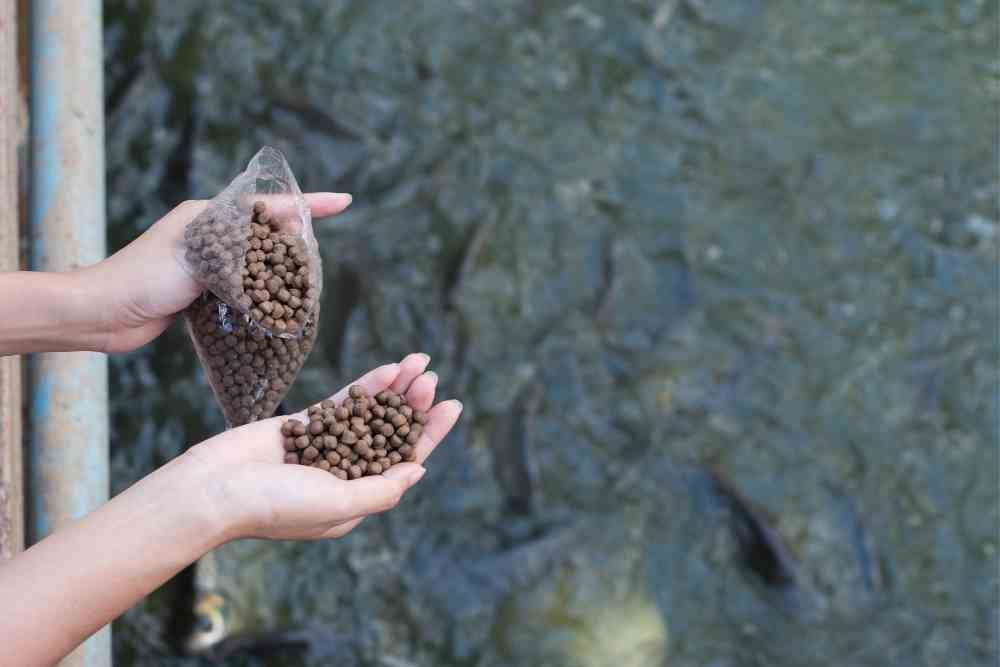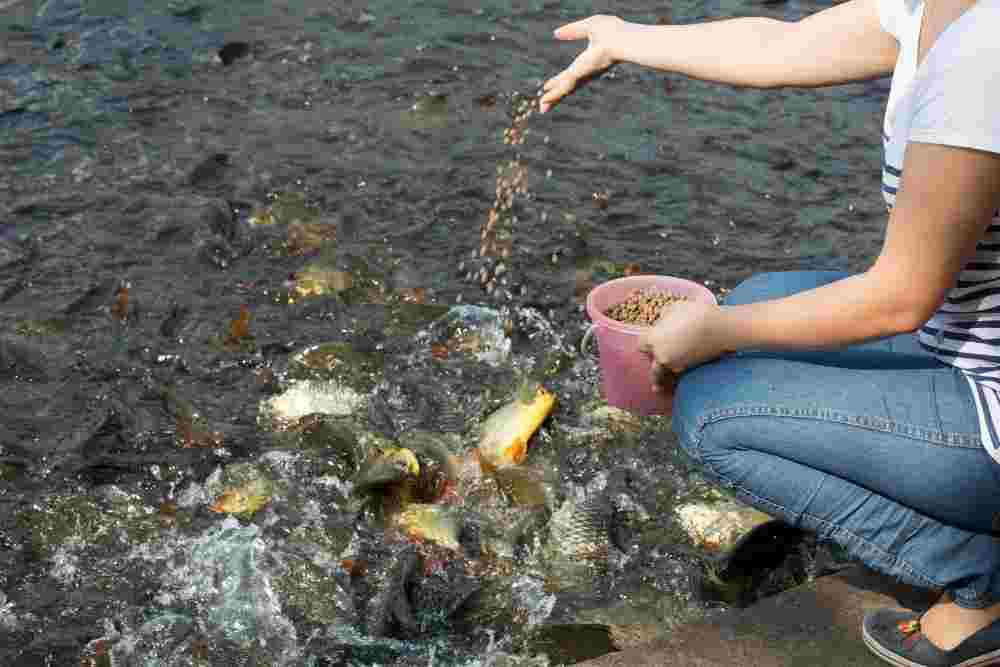Fish feed is an important part of the culture around the world. It has a long history and comes from a variety of sources. Fish feed is essential for keeping fish healthy and providing them with the nutrients they need to thrive. The fish feed has significance in many different cultures.
There are many different types of fish feed available, and they each have their own unique benefits. Some feed types are specifically designed to improve the health or growth of certain types of fish, while others can provide a variety of nutrients that can be beneficial to all sorts of fish.

What is Fish Feed
Fish feed is the staple diet for many different types of fish. The fish feed comes in many different shapes, sizes, and flavors to meet the needs of different fish. There are several different types of fish feed, including flakes, pellets, and tablets.
All three options provide a balanced diet for your fish and can be fed either dissolved or suspended in water. Fish feed is a necessity for both commercial and recreational fishermen.
The type of feed used will depend on the type of fish being fished. Common fish feeds include pellets, flakes, and dried food. The fish feed can also come in liquid forms such as aquarium fuel or cake mixes.
Pellets are the most common type of fish feed because they are small and easy to transport. Flake is a mixture of smaller pellets and is usually fed to larger fish.
Dried food is usually fed to saltwater fish because it has a high content of salt which helps preserve the food. Aquarium fuel is a liquid that is used as a replacement for freshwater when keeping freshwater fish in an aquarium.
History of Fish Feed
The history of fish feed is a long and varied one. From the earliest times, people have been trying to come up with ways to keep fish healthy and happy. The first type of feed was simply a mixture of different types of food, but it wasn’t until the early 1800s that people started developing more specialized feeds for different types of fish.
The history of fish feed is full of surprises. Fish have been feeding on plants and other animals since the dawn of time, but it wasn’t until the 18th century that they were first fed a commercial diet of ground-up fish bones.
Over the years, many different types of fish feed have been developed, each with its own unique benefits. Today, there are a variety of different types of fish feed available, from pellets to flakes to cubes to even tablets. In addition, there are a variety of brands available, so it’s important to choose the right one for your specific needs.
Today, fish feed is one of the most important components in the aquatic food chain and plays an essential role in sustaining both commercial and recreational fisheries.
The fish feed has come a long way since the days of bone meal. Today, there are a variety of different types and formulations of fish feed available to meet the needs of both commercial and recreational fisheries.
Fish feeds are made from a variety of ingredients, including grains, proteins, fats, minerals, vitamins, and botanical extracts. Some feeds are designed for specific types or sizes of fish while others can be used with any type or size of fish.
Sources of Fish Feed
The fish feed can be made from a variety of sources, including plant material, animal products, and recycled materials. Although many different types of feed are available, the most common source for fish feed is processed commercial fishmeal. Other sources of fish feed include algae, plant material, insect larvae, and unprocessed fish.
Fish feed is a necessity for both aquaculture and wild fisheries. Feeding strategies for various types of fish will vary; however, most require some type of supplementation in order to meet their nutritional needs.
Some fish farmers raise their own feed, while others buy it from companies that make feeds for a variety of different types of fish. There are also many feeds available as pet foods.
The Significance of Fish Feed in Culture System
The importance of fish in culture cannot be overstated. From the ancient Egyptians who believed that Osiris was reborn every month as a Nile perch, to the Aztecs who sacrificed millions of Tilapia to the gods, humans have long been enamored with this aquatic creature.
The fish feed has played an important role in both religious and culinary traditions around the world. The major significances of using fish feed are:
–Fish feeds can also be customized to meet specific needs such as high protein content or low-fat levels. In addition to providing nutrients, feeding provides stimulation and enrichment for the fish which can help them to thrive in their environment.
-Feeding fish a varied diet helps to ensure their growth and health, as well as their ability to hunt and scavenge for food. Properly formulated fish feed can also help reduce the amount of pollutants in waterways.
–It provides the fish with the necessary nutrients and proteins to survive and grow.
Benefits of Artificial Fish Feeds in Aquaculture

Fish feed is an important factor in fish culture. It can provide many advantages for the fish, such as improved growth and health, higher catches, and decreased costs.
Fish feed is one of the most important additives in a fish culture system. It helps to provide nutrients and energy for the fish, and can also improve water quality and productivity. Here are some of the benefits of using the artificial fish feed:
-It is easy to store and transport, so it can be used when needed rather than having to Store large amounts of food.
-It is low in cost, making it a good option for small or beginner farmers.
–It can be customized to meet the needs of different types of fish, which makes it a versatile additive.
-It has a long shelf life, allowing farmers to plan for future needs without having to constantly replenish their stocks.
-Fish fed with good quality feed will grow faster and be healthier than those fed with poor quality feed. Fish feed usually contains a variety of nutrients that are necessary for the growth of fish, as well as other additives to improve their condition.
-Feeding a high-quality diet to your fish will help them grow faster than if they were not fed at all. This can lead to increased production in your culture system, which can be useful for farmers who want to produce larger quantities of seafood in a shorter amount of time.
-In general, eating healthy foods will help keep your fish healthy and free from disease, but feeding them high-quality food specifically designed for fish will help even more.
Final Words
In conclusion, commercial fish feed is an important part of fishkeeping. It is necessary to provide your fish with the right type of food in order to keep them healthy and happy. There are many different types of fish feed available on the market and each has its own significance, so be sure to do your research and find the right one for your tank.